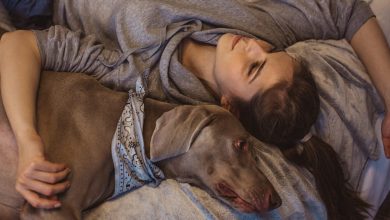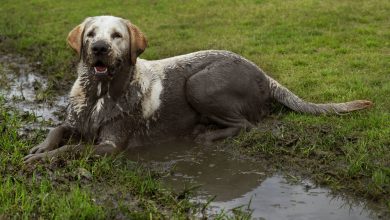How To Tie Bandana On Dog

Introduction:
Tying a bandana on your dog can be a great way to add a touch of style and personality to their wardrobe. Bandanas come in a variety of materials, sizes, and colors, so you can find one that is perfect for your pup. Not only can bandanas provide an extra layer of protection from sunburn or dirt, but they can also help keep your pup cool in the summer heat. Knowing how to properly tie a bandana on your dog is essential for safety reasons and will make sure that it stays secure during playtime or other activities. In this article, we will explain why people choose to use bandanas on their dogs, the different types of dog bandanas available, how to measure a dog for a bandana, how to tie a bandana on a dog, different ways to tie the knots, tips and tricks for tying the knots, safety considerations when tying a bandana on your dog, and additional accessories that can be used with a bandana.
Why Use Bandanas?:
Bandanas are an easy way to add some personality and style to your pup’s look. They come in all sorts of colors and patterns so you can find one that matches your pup’s unique personality. Not only do they look great but they can also provide an extra layer of protection from the sun or dirt. Depending on the material used for the bandana, it can also help keep your pup cool in the summer heat. Bandanas are also relatively inexpensive compared to other pet clothing items so you don’t have to break the bank if you want to give your pup some extra style.
Types of Dog Bandanas:
There are several different types of dog bandanas available on the market today. Traditional cotton bandanas are lightweight and breathable which makes them great for hot summer days. Nylon bandanas are waterproof which makes them perfect for rainy days or trips to the beach. Fleece-lined bandanas are great for colder climates as they provide an extra layer of warmth without being too bulky or heavy. No matter what type of material you choose, make sure that it is comfortable enough for your pup and doesn’t irritate their skin.
How to Measure a Dog for a Bandana:
It is important that you select the correct size bandana for your pup in order to ensure that it fits properly and is comfortable enough not to irritate them while wearing it. The best way to do this is by measuring around their neck with a tape measure and then adding an inch or two for extra room if needed. If you plan on using a larger sized bandana then you may need to measure around their chest area as well in order to get an accurate measurement.
How To Tie A Bandana On A Dog:
Once you have selected the right size bandana for your pup then it is time to learn how to tie it on correctly. Start by placing the center of the bandana at the back of their neck and then wrap each end around their body until they meet at the front of their neck again. Securely tie each end together with either a bow tie knot or square knot depending on your preference or skill level with tying knots in general. Make sure that both ends are securely tied together so that it won’t come off easily during playtime or other activities.
Different Ways To Tie The Knots:
There are several different ways that you can tie the knots when securing the bandana onto your dog’s body depending on what type of knot you prefer or what type of material you are using for the bandana itself. For example, if you are using traditional cotton then you may want to use either a bow tie knot or square knot as these will be easier to untie later if needed. However, if you are using nylon then you may want to use either a slip knot or double knot as these will be more secure and less likely to come undone during playtime or other activities.
Tips And Tricks For Tying The Knots:
It is important that both ends are securely tied together so that it won’t come off easily during playtime or other activities. To ensure this happens every time, try using two hands when tying each knot instead of just one hand as this will help make sure that everything is securely fastened into place before letting go of either end. Additionally, make sure that there is no excess fabric after tying each knot as this could cause discomfort for your pup if left unchecked.
Safety Considerations When Tying A Bandana On Your Dog:
When tying any type of clothing item onto your pup it is important that you take certain safety precautions in order to ensure their comfort and wellbeing at all times. Make sure that the fabric used isn’t too tight around their neck as this could cause discomfort or even restrict their breathing if left unchecked for too long periods of time. Additionally, check regularly throughout the day whether any part of the fabric has become loose or frayed as this could lead to potential choking hazards if left unchecked over time as well.
Additional Accessories That Can Be Used With A Bandana:
In addition to using just a traditional cotton or nylon bandana on its own there are several additional accessories that can be added onto it in order create unique looks such as charms, beads, feathers etc… These accessories can be added onto either side of the fabric in order create interesting patterns or designs which will help make your pup stand out from all others while still being comfortable enough not cause any irritation while wearing them out and about during playtime or other activities .
Conclusion:
Tying a bandana onto your pup doesn’t have to be complicated if done correctly with safety considerations taken into account at all times . By following our instructions above we hope that we have provided enough information about why people choose use them , types available , how measure them , how tie them , different ways tie knots , tips & tricks , safety considerations , additional accessories etc…to help pet owners feel confident when selecting & tying one onto their furry friend .
FAQs:
Q1: How tight should I make my dog’s bandana?
A1: You should make sure that it is tight enough so that it won’t come off easily during playtime or other activities but not too tight where it restricts their breathing or causes discomfort when worn over long periods of time .
Q2: What type of fabric should I use?
A2: This depends on what climate you live in as well as personal preference . For hot climates traditional cotton is usually best while nylon works better in wetter climates . If colder climates then fleece-lined fabrics work best .
Q3: Are there any additional accessories I can add?
A3: Yes! Charms , beads , feathers etc…can all be added onto either side fabric create interesting designs & patterns .



